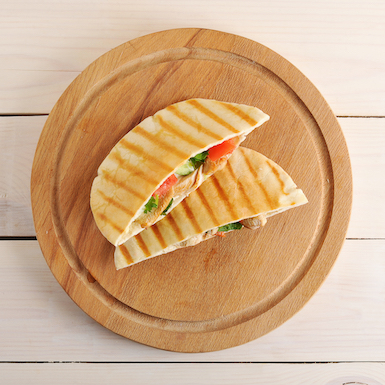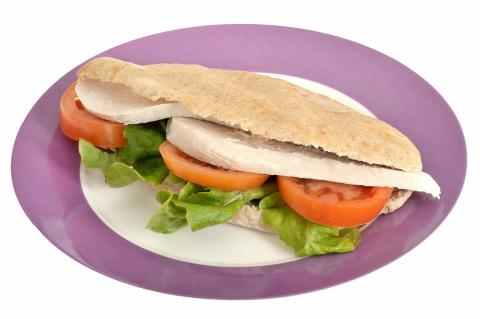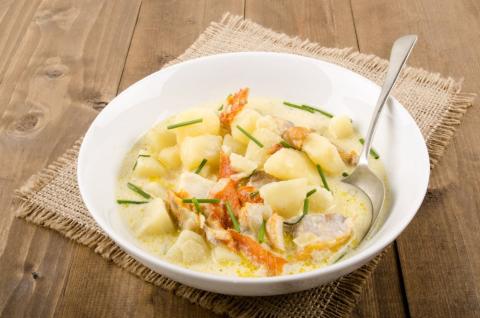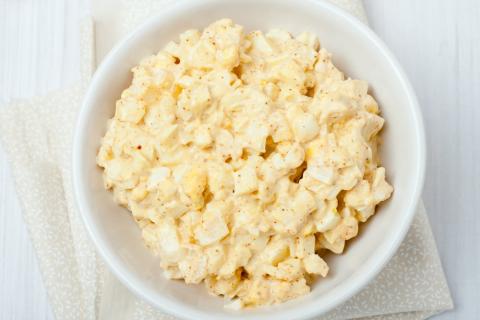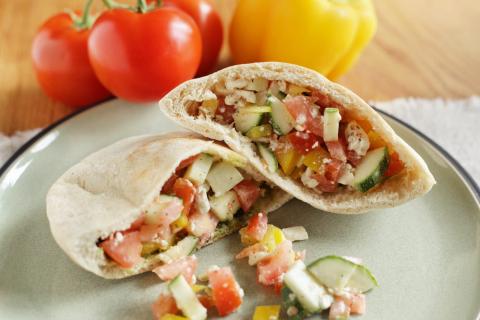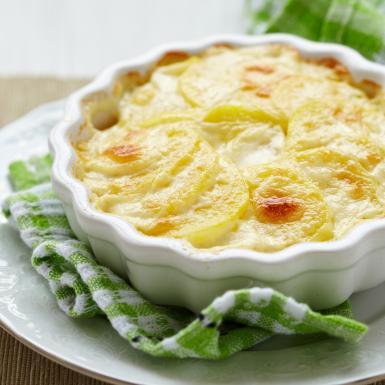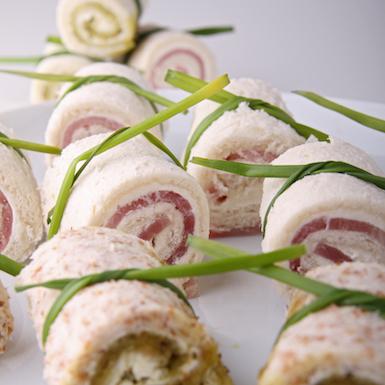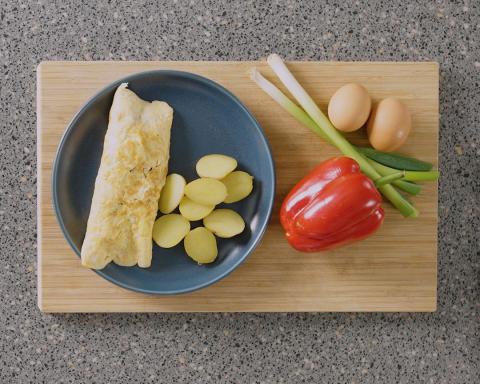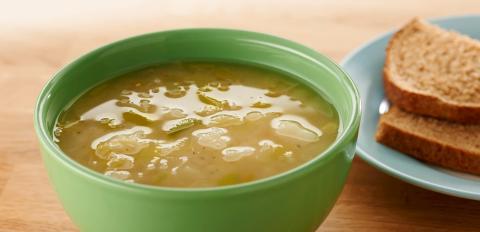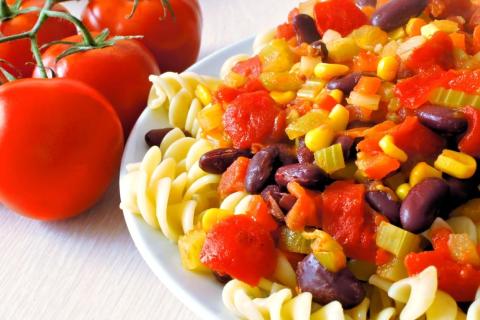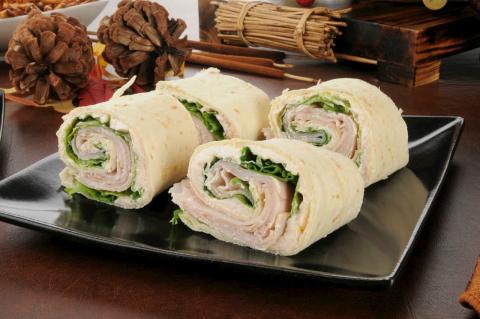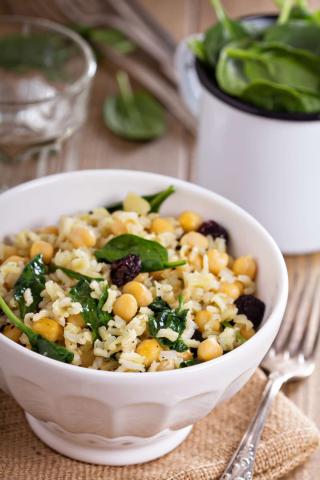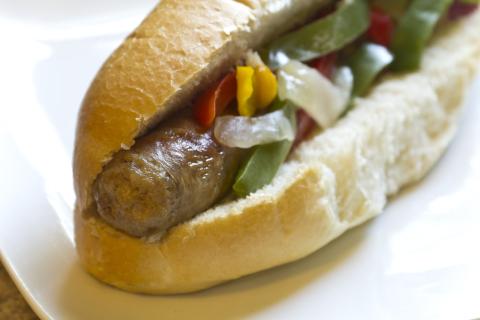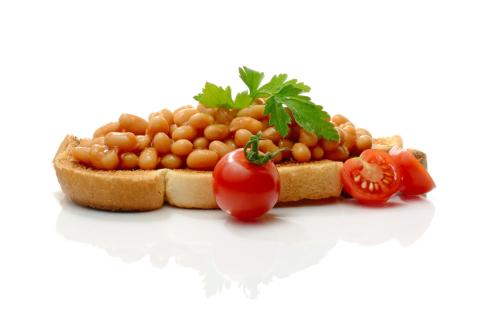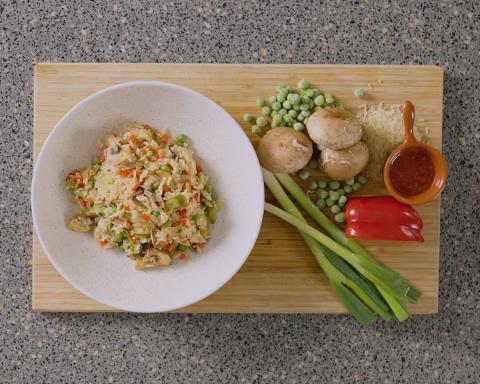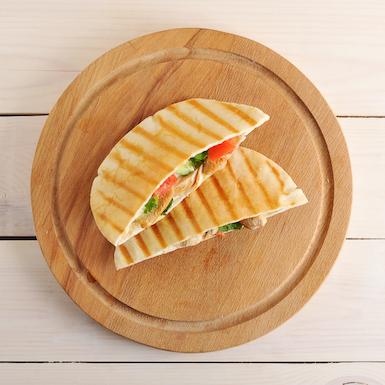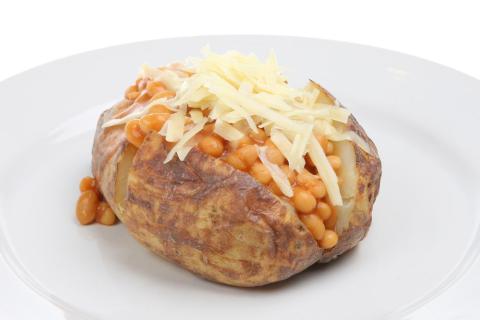- 1 Tablespoon (10g) Vegetable Oil
- (Small Pack) (200g) Turkey Breasts
- (Optional) (1g) Chilli Flakes
- 1 (160g) Red Pepper
- 1 (160g) Yellow Pepper
- 1 (Medium) (145g) Avocado
- (Handful) (10g) Fresh Coriander
- 2 (150g) Wholemeal Pitta Breads
- 3 Heaped tablespoons (90g) Half Fat Crème Fraîche
Ingredients
Allergy Disclaimer
Always check the label of each ingredient for allergy warnings.
Method
- Cut the turkey into strips, approximately 1cm thick.
- Heat the oil in a wok or large frying pan and fry the turkey (and chilli flakes if using) for 5-6 minutes. Stir the turkey every now and then as it is cooking to ensure it browns evenly.
- Wash the peppers, cut them in half and remove the seeds by placing skin side up and tapping gently. Cut into 1 cm strips.
- If using spring onions; trim the tops and tails then remove the outer layer then slice.
- Add the peppers and spring onions to the pan and fry until the turkey is cooked through but the peppers still have crunch.
- Place the tip of a sharp knife into the avocado until it touches the stone, then gradually cut it in half keeping the knife against the stone. It should then pull apart and the stone can be removed. Using a dessert or table spoon remove the flesh by easing the spoon between the flesh and the skin. Once the flesh has been removed cut into slices.
- Cut the pitta bread in half and then open each half to allow them to be filled. Wash the coriander and finely chop.
- Divide the avocado and coriander between the pitta halves then spoon in the turkey mix. Top with creme fraiche.
Time Saver Tips
Miss out the cooking by using cooked turkey.
Cost Saver Tips
Leftover turkey could be used.
Tips for Kids
Let them put their own pitta together.
Nutritional Information
Based on a single serving of 216g (% of an adult's reference intake)
Energy
261 kcals ( 13 %)
1,097 kJ ( 13 %)
Fat
4.3 g ( 22 %)
Saturates
22 g ( %)
Sugar
5.4 g ( 6 %)
Salt
0.2 g ( 3 %)
Detailed nutritional information
| Per 100g | Per 216g serving | |
|---|---|---|
| Energy Kcals | 121 | 261 |
| Energy Kj | 508 | 1,097 |
| Protein | 9 g | 19.4 g |
| Total Fat | g | g |
| Saturated Fat | 2 g | 4.3 g |
| Carbohydrates | 10.2 g | 22 g |
| Total Sugars | 2.5 g | 5.4 g |
| NSP Fibre | 2 g | 4.3 g |
| Sodium | 53 mg | 114 mg |
| Salt | 0.1 g | 0.2 g |
Find out about nutritional labelling
Nutrition labels on the front of packaging
- Most of the big supermarkets and many food manufacturers display nutritional information on the front of pre-packed food.
- Front of pack nutrition labels provide information on the number of grams of fat, saturated fat, sugars and salt and the amount of energy (in kJ and kcal) in a serving or portion of a recipe.
- The labels also include information about reference intakes (expressed as a percentage) which are guidelines about the approximate amount of particular nutrients and energy required for a healthy diet.
- The colour coding tells you at a glance if the food has high (red), medium (amber) or low (green) amounts of fat, saturated fat, sugars and salt.
- The more greens on the label, the healthier the choice
- Amber means neither high nor low, so you can eat foods with all or mostly ambers on the label most of the time.
- Reds on the label means the food is high in that nutrient and these are the foods we should cut down on. Try to eat these foods less often and in small amounts.
Food shopping tips
If you’re trying to decide which product to choose, check to see if there's a nutrition label on the front of the pack. This will help you to quickly assess how your choices stack up. You will often find a mixture of red, amber and green colour coding for the nutrients. So when you're choosing between similar products, try to go for more greens and ambers and fewer reds if you want to make a healthier choice.
 Activities & Play
Activities & Play Behaviour
Behaviour Childcare
Childcare Development & Growing Up
Development & Growing Up Family, Friends & Relationships
Family, Friends & Relationships Feeding Your Baby
Feeding Your Baby Food & Eating
Food & Eating Health & Safety
Health & Safety Mental Health & Wellbeing
Mental Health & Wellbeing Money & Work
Money & Work Online Behaviour & Safety
Online Behaviour & Safety Pregnancy & First Days
Pregnancy & First Days School & Education
School & Education Sleep
Sleep

